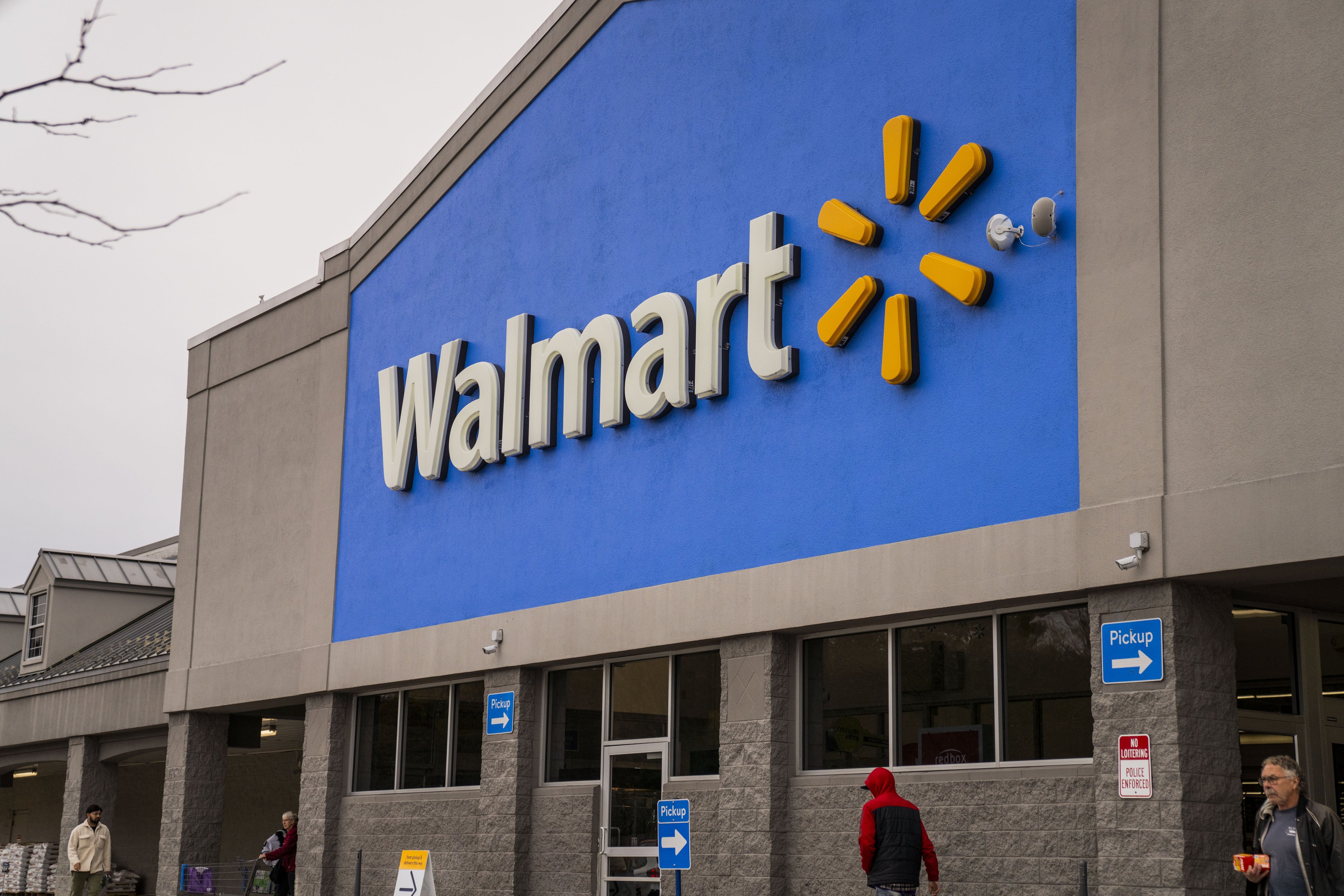Stock market gains have been plentiful for most investors over the past year, but those gains haven't translated to all sectors, especially retailers. In spite of a somewhat steady uptrend in consumer spending, two of our nation's largest retailers, Wal-Mart (WMT 0.46%) and Target (TGT +0.33%), have struggled mightily for their own separate reasons.
What's wrong with Wal-Mart?
Wal-Mart is a retail giant, and its sheer size and pricing power come with the expectation that it's supposed to blow its competitors out of the water. This worked for a number of decades prior, but lately this formula for success has gone awry for Wal-Mart as evidenced by its six straight quarters without same-store sales growth in the U.S.

Image source: Getty Images.
I suspect Wal-Mart's recent weakness boils down to two factors. First, Wal-Mart is a public-image disaster. From the way the company handles its workers' pay to alleged bribery and misconduct allegations in Mexico, China, India, and Brazil, Wal-Mart does little to encourage consumers that's it's looking out for their best interests or that of its employees.
Also, we have to consider that Wal-Mart's target audience (no pun intended) tends to be lower-income, cost-conscious individuals. These consumers are the most susceptible to economic fluctuations since they're often working with less in disposable income.
A perfect case in point was Wal-Mart blaming the IRS furloughs last year for slowing the process by which consumers get their tax refunds. Refund checks are a key source of spending for Wal-Mart's core customer, and budget cuts and congressional impasses at the federal level have put its growth in jeopardy. Put simply, economic downdrafts have the potential to exact big problems for Wal-Mart's customer base since they are very dependent on economic growth for survival.
What's wrong with Target?
Target has had its own set of issues. since it tends to focus on a more affluent customer.
Topping that list of concerns was the massive data breach this past holiday season which compromised credit card and personal information for some 70 million shoppers. The fallout from this technological faux pas was sweeping, with consumers staying away from Target's stores during the critical holiday season.
Aside from trust issues, Target's product mix has been called into question, as has the company's expansion plans into Canada.
Target's rapid growth was inspired in the 1980s and 1990s by then-CEO Ron Johnson (yes, the same Ron Johnson who fumbled miserably while running J.C. Penney), who brought name-brand merchandise to Target which was priced at attractive price points to lure in new customers. Johnson learned early that consumers want the appeal of brand-name merchandise and exclusivity, but without the brand-name price tag. Lately, pundits have questioned whether Target is doing everything it can to optimize its product selection for cost-conscious consumers.
In addition, the company's push into Canada isn't going as planned. Despite opening more than 80 stores in Canada over the past year, its second-quarter same-store sales in Canada slumped 11%. Within the U.S., Target's same-store sales have decline or failed to provide positive growth in each of the past six quarters, matching Wal-Mart's subpar performance.
In sum, neither Target nor Wal-Mart has any true momentum to build off of.
But, that could be about to change...
How Wal-Mart and Target plan to lure you back into their stores
With the holiday season around the corner and shareholders in these two companies getting admittedly restless as the stock market heads effortlessly higher, these two retail kingpins announced plans this past week to bring new and old customers back into their stores.
But, what I find most interesting is that Wal-Mart's and Target's strategies to bring in customers are completely unique from one another. Best of all, these two companies are finally addressing a primary complaint their customer bases had about their stores.
Wal-Mart's plan
Wal-Mart's plan of attack is simple: Improve the customer service experience. Let's be realistic. Wal-Mart's prices were never the problem. Wal-Mart's size and distribution/supplier network allow it to buy products in bulk, enabling it to receive sizable discounts in return.
The actual experience of shopping at Wal-Mart, however, is sometimes a complicated and completely different story. Long checkout lines during the holidays and complications during the checkout process, including the need to scan coupons or price-match items, canceled out the effectiveness of the company's investments in self-checkout technology.
The solution? Wal-Mart pledged to have a team member at every register during the peak hours of the holiday shopping season beginning after Black Friday, which it's referring to as its "checkout promise." Simply put, people value their time, and as Wal-Mart's chief merchandising officer noted in an interview with The Wall Street Journal, "Taking the possibility of waiting in long lines off the table will attract more people into stores."
Its checkout promise builds upon a move Wal-Mart set into motion last year whereby it's focused on opening smaller-platform stores, known as Wal-Mart Express. These smaller locations are a better fit in close-knit communities who might be less receptive to a Wal-Mart warehouse, but more importantly they feature the ability to presumably get in and out with ease.
Target seeks the bull's-eye
On the flip side, Target's customer service has never been a noted issue with the company. Sure, it may have had a big helping of humble pie last holiday season when its IT-network failed to protect its customers' personal information, but this is more a rarity than the norm with Target.
Instead, Target has always had to play catch-up with Wal-Mart when it came to pricing. Target's focus on a slightly more affluent, but still cost-conscious customer has prompted the company to approach this year's holiday season with a hefty round of discounting on a wide variety of items to draw consumers into its stores.
This approach is a bit of a double-edged sword for Target because it probably will help accomplish its goal of attracting a larger shopper base, but it'll come at the detriment of its gross margin, which is going to take a hit. In fact, Target lowered its full-year EPS forecast after reporting its second-quarter results this week, projecting it will now earn $3.10-$3.30 in 2014 compared to a prior forecast of $3.60-$3.90.
But, if Target can successfully court shoppers back into its stores I'd opine that its favorable customer service image prior to the data breach debacle last year will more than likely keep those consumers loyal.
Is it time to "check out" these stocks?
After such a long swoon the question has to be asked: Is it time to go bottom-fishing on Wal-Mart or Target, or should investors leave these retailers on the shelf?
Speaking as someone who worked in retail for a decade, and who's followed retail stocks for nearly two decades, I'm personally keeping a very close eye on Target here. Though Target wasn't exactly lighting it up in the sales column prior to its data breach, it was better positioned than Wal-Mart given that its customer base is just a little less affected by fluctuations in the economy. Also, investors should consider that the negative effects from the data breach are a short-term issue and aren't indicative of weakness in Target's business model.
Though Target's forward P/E is a tad higher than Wal-Mart (15 versus 14), I suspect Target has the potential to outgrow its larger peer if it can successfully turn its holiday discounting into a loyalty driving event. A telltale sign of that effectiveness is going to be how many people sign up for and/or use the REDcard this upcoming holiday season. In exchange for 5% discounts, free online shipping with orders over $50, and an extended return policy, Target's REDcard offers a way to tie down its loyal customers to its stores.
Wal-Mart isn't a bad investment here per se, and it's offered a lot of intelligent business strategies of late, such as opening its Express stores. But when push comes to shove, Target is going to have an easier time adjusting its prices to lure in consumers than Wal-Mart's going to have in convincing its core customer that its customer service issues have improved.
Of course, only time will tell if that's the case.







